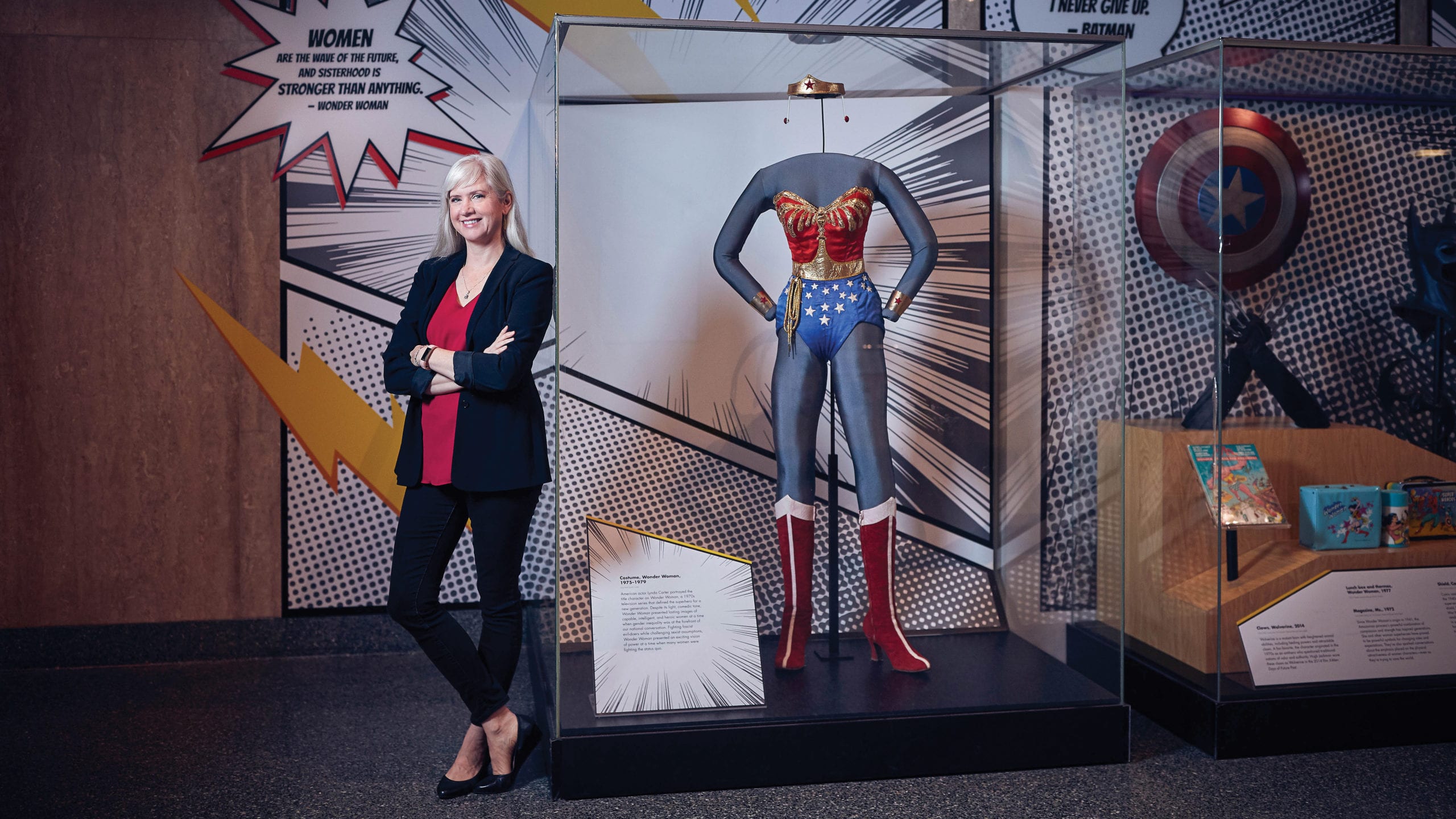How do you display the Batmobile? Or the Declaration of Independence? Just ask Clare Brown ’92, chief of design for the National Museum of American History.
.
Chances are you’ve seen the work of Clare Brown ’92. Every year more than 4 million people do. Chief of design for the Smithsonian’s National Museum of American History, she oversees the look, feel, and flow of the landmark attraction’s public space—all 140,000 square feet of it. From the iconic front steps, where families gather for group shots, to every exhibition, every object on display within—the actual flag that inspired the national anthem, a section of the Greensboro Woolworth’s lunch counter from a notable civil rights sit-in—if something is part of the visitor experience, Brown is responsible for its design.
Do you get excited every morning about going to work? This is the Smithsonian Institution!
It is exciting. I love going to the museum. I love working in the museum. What really excites me is thinking about what can we continue to do better. Our biggest audience is our school groups, all those kids who visit on a middle school trip to Washington, D.C. The museum is just one stop for them, but I want them to hold onto the experience as something wonderful. I want them to want to come back with their own kids one day.
How do you make those lasting impressions?
We think really hard about how our public space works for visitors. I’ve referred to myself as an experience designer. We focus on visitors as opposed to just saying, “We want to make this exhibition, so we’re going to stick these artifacts out there and hope people get it.” Any educator will know you can’t force somebody to learn something. You have to encourage them. So if there’s something we want people to be interested in, we need tell the story in a way that hooks them. One of the things we think a lot about is making sure visitors can find themselves in American history. Are we providing them with connection points?
What are some of the exhibitions you’ve designed?
In 2009 I was asked to design an entirely new gallery devoted to the presentation of documents in American history. The first exhibit that I did for it was the Declaration of Independence. So that’s pretty spectacular. And the next one was the Emancipation Proclamation. I’ve been very lucky. I designed the first inaugural ball gown exhibition and the food exhibition that includes Julia Child’s kitchen. I think encounters with real objects from history is what makes the Smithsonian so mythical. In the food exhibit, we have the first margarita machine! We currently have on loan the 1989 Michael Keaton Batmobile from Warner Brothers. We have Lynda Carter’s original Wonder Woman costume. Every day there’s something spectacular.
How long does it take to put together a new display?
Exhibits are usually in planning for a minimum of two years. Many of our exhibitions are considered permanent, meaning they’re on view for 20 years or more, which is very different from other museums that do a lot of temporary shows. For our permanent exhibitions, some projects have been in the works for upwards of 10 years. So
we have a baseline of stability, which I think is valuable, but at the same time we’re always looking for new ideas and ways to keep things up to date and relevant and exciting.
Are there any upcoming exhibitions you’re particularly excited about?
Next year is the 100th anniversary of the passage of the 19th Amendment, a woman’s right to vote. We are doing an exhibition called “Girlhood: It’s Complicated,” which explores women’s history in America through the lens of girlhood—who gets a girlhood, how have the identities and roles of women been shaped through their experiences as girls, how have girls changed our country? We look at labor, health, gender identity, education, fashion, news, and politics.
How did you get into your field?
I’ve always loved painting and drawing and making things. When I went to Williston, I took quite a few art classes. Marcia Reed was the really wonderful art teacher back then, and she encouraged me to work in the theater program, helping to paint sets and work on design. I really loved that, and when I went to college I built on what I did at Williston. I was a stage tech, I was a lighting tech. My degree was in anthropology, but I worked in the theater the whole time. And then I did the same thing in graduate school. I went to George Washington for museum studies. It ended up that my background in theater translated really well to exhibition design. GW is really good at providing a professional basis; it requires internships. I actually interned at the Smithsonian at American History, so I’ve been intermittently at the museum for a very long time!
Any favorite moments through the years?
I was there when Michelle Obama donated her first inaugural gown. She was so humble. She was with her mom, and when we put her gown into the exhibition case, she leaned over and whispered to her mom, you could read her lips, she said, “Oh, my gosh. It’s right there. It’s in the Smithsonian!”

